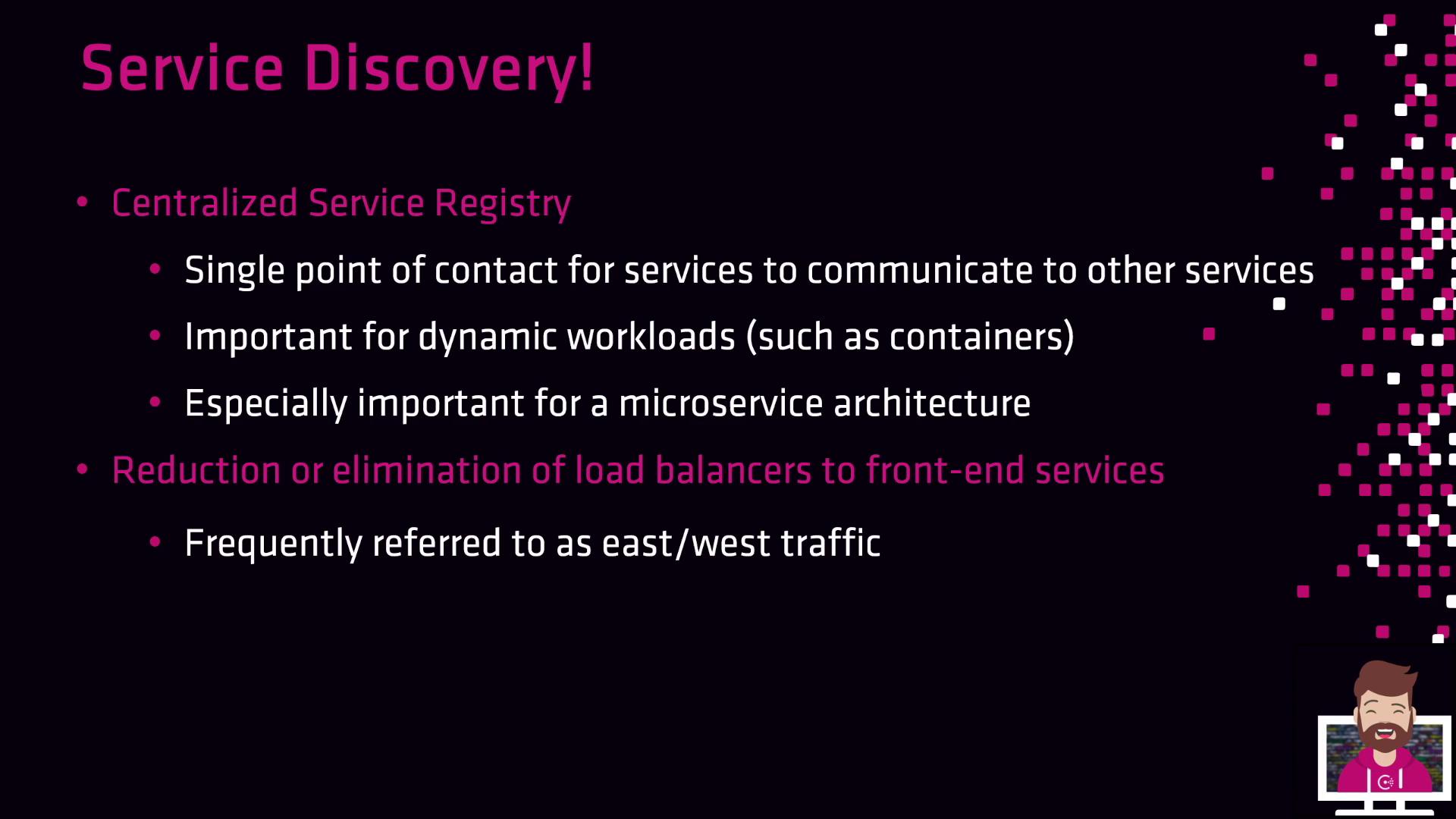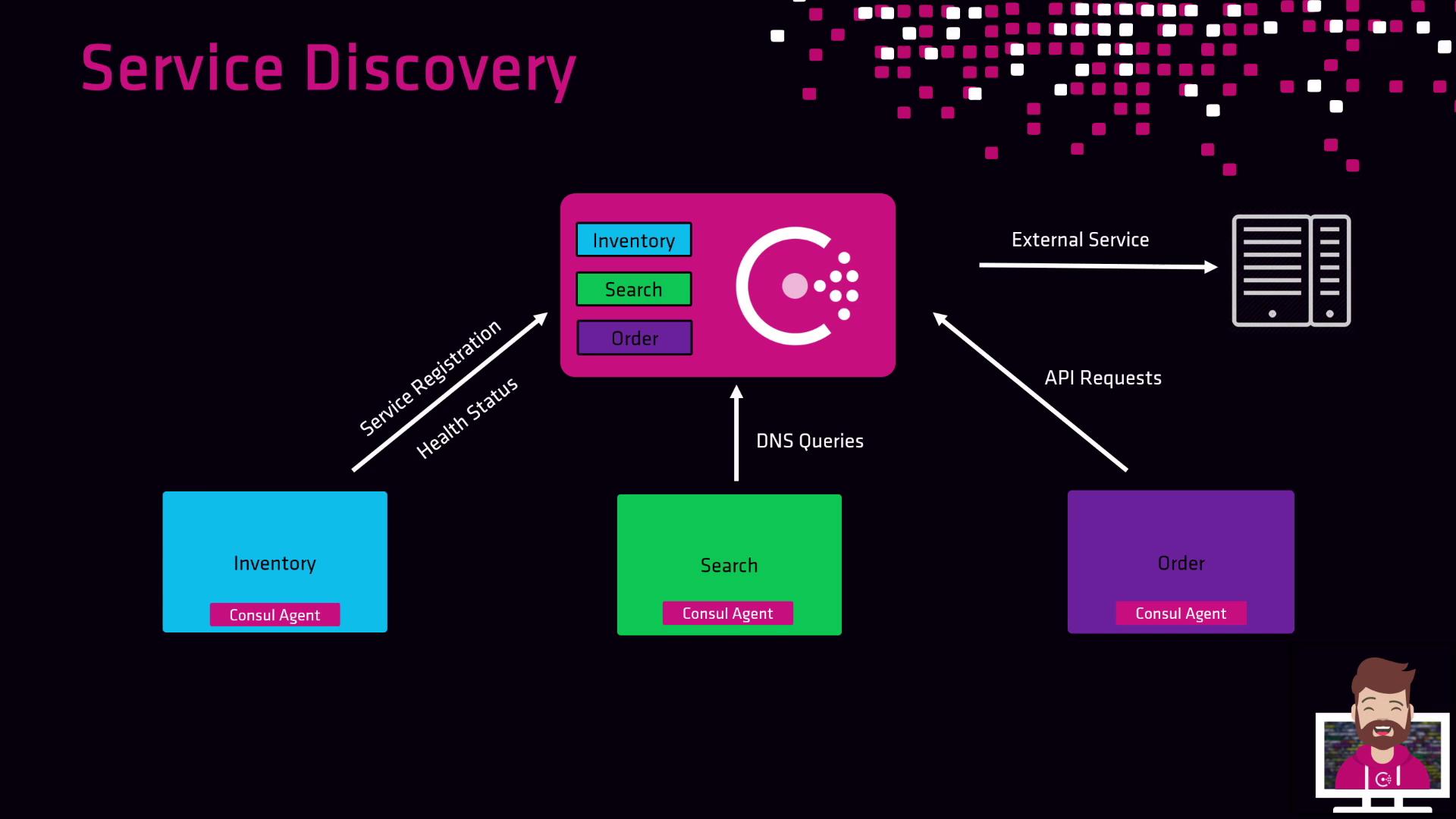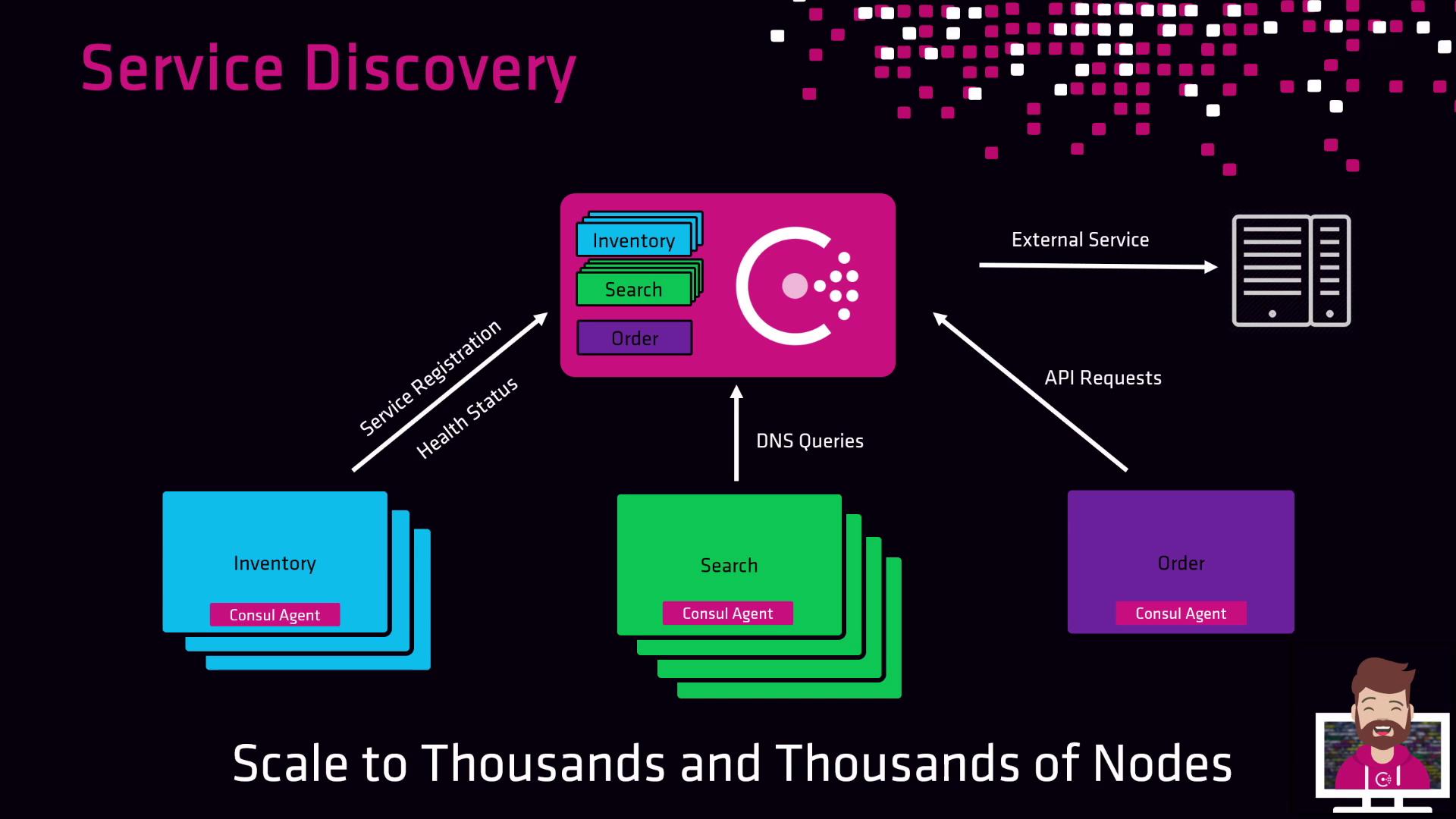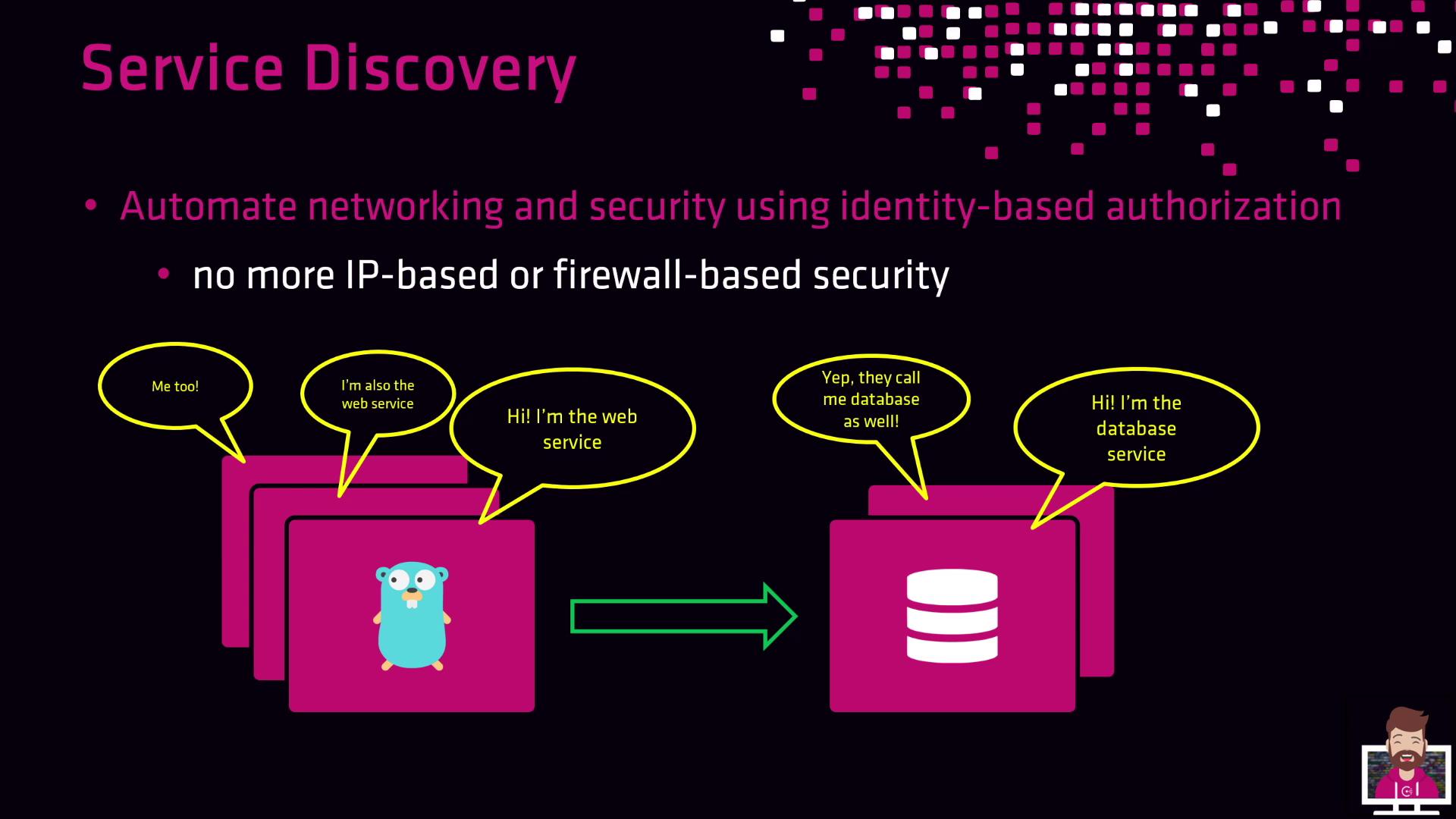HashiCorp Certified: Consul Associate Certification
Explain Consul Architecture
Service Discovery
In this article, we’ll dive into how HashiCorp Consul enables robust service discovery by providing a centralized registry, real-time health monitoring, and secure, identity-based connectivity. You’ll learn how Consul scales in dynamic microservice environments and multi–data-center architectures.
Centralized Service Registry
A centralized registry is the single source of truth for service locations and health status. When a service (for example, Service A) starts, its Consul agent registers the service instance with the Consul servers. Later, if Service A needs to call Service B, it queries Consul for a healthy Service B endpoint and receives the IP and port of a live instance.
This approach is critical in containerized or auto-scaling environments where instances can spin up or down rapidly. By offloading east–west load balancing of microservices to Consul’s registry, you often reduce the need for dedicated load balancers between services.

Real-Time Health Monitoring
Consul agents distribute health checks across all nodes. Each agent runs:
| Check Type | Scope | Example |
|---|---|---|
| Node-level | Host or VM resource | SSH availability, disk space, CPU usage |
| Service-level | Application endpoint | HTTP /health latency, TCP port response |
When a health check fails, the agent immediately updates the service’s status in the catalog. As a result, Consul only returns healthy service instances in DNS responses or API queries.

Service Registration and Lookup Workflow
Imagine an e-commerce platform with three microservices: Inventory, Search, and Order. Each service runs a local Consul agent, which:
- Registers the service on startup.
- Performs scheduled health checks.
- Updates the central catalog with status.
When Search needs to call Order, it has two lookup options:
- DNS:
nslookup order.service.consul - HTTP API:
curl http://127.0.0.1:8500/v1/health/service/order?passing=true
Consul returns a list of healthy Order instances, and Search connects directly.

As traffic grows, Inventory and Search services can scale independently. New instances register automatically, and decommissioned instances deregister. When Order queries Inventory or Search, it always receives healthy endpoints across all nodes.

Identity-Based Authorization with Consul Connect
Consul Connect extends service discovery to include mTLS encryption and identity-based policies (intentions). Instead of managing IP-based firewall rules, define intentions like:
web-service → database-service
When new web-service instances register, they automatically gain permission to talk to database-service without manual network changes.
Note
Consul Connect leverages mTLS certificates for both authentication and encryption. Intentions are enforced by sidecar proxies, ensuring secure and auditable communication.

Multi–Data Center Service Discovery
Consul supports global service discovery across multiple data centers. Each DC runs its own Consul cluster, and mesh gateways connect clusters over public or private networks. Services register locally but can query remote data centers for failover or aggregation.
For example, deploy your web and database services in both Azure and AWS:
- Azure web service queries local Consul for database instances.
- If the Azure database fails, Consul transparently fails over to the AWS database cluster.
This transparent failover ensures high availability and performance across cloud providers and regions.
Links and References
- Official Consul Documentation: https://www.consul.io/docs
- Consul Connect Overview: https://www.consul.io/docs/connect
- DNS Interface Guide: https://www.consul.io/docs/discovery/dns
- HTTP API Reference: https://www.consul.io/api
- HashiCorp Learn: https://learn.hashicorp.com/collections/consul/getting-started
Watch Video
Watch video content